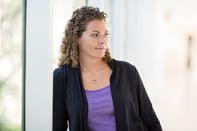Published on
Experience as the Best Teacher: How Higher Education Acknowledges It

Higher education institutions have long focused on academic excellence as the cornerstone of their mission. However, since the 1940s, there has been growing recognition of the importance of the overall student experience in shaping not only academic outcomes but also personal growth and professional readiness. This essay examines how higher education acknowledges the critical role the student experience plays in achieving its academic excellence mission, drawing on seminal peer-reviewed literature and highlighting the evolution of innovative approaches employed over time to enhance students' curricular, cocurricular and extracurricular experiences.
Understanding the Student Experience
The student experience in higher education encompasses all aspects of a student's interaction with their institution, including academic, social and personal dimensions. According to Tinto (2017), student engagement is a key predictor of retention and success in higher education. Engaged students are more likely to persist in their studies, achieve higher academic performance and develop essential skills for their future careers. This holistic view of the student experience aligns with Astin's (1984) theory of involvement, which posits that the more students are involved in their educational experience, the more they learn and develop.
Other studies have underscored the multifaceted nature of the student experience. Kuh (2013) emphasizes the importance of creating a supportive and inclusive campus environment that fosters a sense of belonging. Students who feel connected to their institution are more likely to engage in meaningful learning experiences and persist through challenges. Strayhorn (2018) supports this notion, highlighting the role of supportive relationships with faculty, staff and peers in promoting student well-being and academic success.
This understanding has led many institutions to develop various forms of intervention aimed at reinforcing the students’ sense of connection to their institution. For example, move-in day welcome activities have spread across campuses at institutions that offer residential facility services. Although the University of Colorado Denver has a tiny footprint in residential facilities, we leverage move-in day to create a positive first impression by encouraging administration, faculty and staff to volunteer and come out to welcome and assist our newly admitted students as they move into their dorm rooms prior to the start of classes. Helping lower student anxiety by showing up to welcome students and their accompanying parents to their new home on one of their most important moments with the university is an intentional statement about how much we value the student experience.
Enhancing Curricular Experiences
Curricular experiences form the core of the student experience in higher education, dating back to the origins of university. To enhance these experiences, institutions have adopted and continue to evolve innovative teaching and learning practices that promote active engagement and deep learning. One such approach is integrating high-impact practices (HIPs), as Kuh (2008) identifies. These practices, which include undergraduate research, service learning, internships and learning communities, have been shown to enhance student learning and development significantly. At CU Denver, where one of our strategic goals is to be an equity-serving institutional model, we try to go further in this direction with our Inclusive Pedagogy Academy, which aims to develop faculty’s sensitivity and responsiveness to differences in learning among students as a way to identify and address students’ individual learning needs.
Kuh (2013) highlights the effectiveness of learning communities in fostering collaboration and a sense of belonging among students. By enrolling in a cohort of courses with a common theme or interest, students can develop meaningful connections with their peers and faculty, enhancing their academic and social integration. This approach aligns with other findings in the literature, emphasizing the importance of creating intentional learning experiences that promote critical thinking and problem-solving skills. Allowing students space to cocreate their major is another powerful motivator and enhancer of the student experience, which CU Denver is not unique in adopting. The Brown University Model stands out as the best-known pioneering example in this space.
Moreover, institutions are increasingly incorporating experiential learning opportunities into their curricula. Dewey's (1938) theory of experiential education underscores the value of learning through experience and reflection. By engaging in hands-on activities, students can apply theoretical knowledge to real-world contexts, deepening their understanding and enhancing their skills. Support for the positive impact of experiential learning on student outcomes from study abroad programs, internships and community-based projects led to incorporating these activities into curricula as high-impact practices. What needs to be underscored, though—as Dewey did—is that it is not the experience per se but the learner’s reflection on that experience that makes experience the best teacher.
Enhancing Cocurricular Experiences
Cocurricular experiences, which complement formal curricula, play a vital role in students’ holistic development. These experiences provide opportunities for students to explore their interests, develop leadership skills and build a sense of community. According to Keeling (2014), cocurricular activities can enhance students' emotional intelligence, resilience and overall well-being.
Institutions are employing various strategies to enhance cocurricular experiences. One innovative approach that became quite popular for a while has been the use of e-portfolios, which allow students to document and reflect on their learning experiences. According to Chen and Light (2010), e-portfolios can help students integrate their learning across different contexts and demonstrate their skills and achievements to future employers. This approach aligns with the concept of integrative learning, which emphasizes the interconnectedness of knowledge and skills across disciplines and experiences.
Furthermore, institutions are creating opportunities for students to engage in leadership development programs. Komives et al. (2013) highlight the importance of cultivating leadership skills in students, arguing that leadership is a process of lifelong learning and development. By participating in leadership workshops, student organizations and mentoring programs, students can develop essential skills such as communication, teamwork and problem solving, which are critical for their future success.
Enhancing Extracurricular Experiences
Extracurricular experiences, which take place outside formal curricula and cocurricular activities, are also essential for student development. These experiences provide opportunities for students to pursue their passions, build social networks and develop a sense of identity. According to Pascarella and Terenzin (2005), involvement in extracurricular activities is positively associated with academic achievement, retention and personal development.
Institutions are adopting various approaches to enhance extracurricular experiences. One effective strategy is creating living-learning communities, where students with shared interests live and learn together in a residential setting. According to Inkelas et al. (2007), living-learning communities can enhance students' sense of belonging, academic engagement and overall satisfaction with their college experience. By providing a supportive and stimulating environment, these communities help students develop meaningful connections with their peers and faculty. At CU Denver, students pursuing majors through the College of Arts and Media and who choose to live in one of our residential facilities have the option to do so among fellow arts and media majors where additional programming is provided on the floor.
In addition, institutions are promoting participation in sports and recreational activities as a means of enhancing extracurricular experiences. According to Forrester (2014), involvement in sports can promote physical health, emotional well-being and social integration. By providing access to sports facilities, intramural leagues and fitness programs, institutions can support students' holistic development and well-being.
Conclusion
The importance of the student experience in higher education has been properly acknowledged and cannot be overstated. As institutions strive to enhance their curricular, cocurricular and extracurricular offerings, they are creating environments that support student engagement, learning and development. By adopting innovative practices and fostering a sense of belonging, institutions are helping students thrive academically, personally and professionally.
Higher education literature underscores the value of a holistic approach to the student experience. Tinto (2017), Kuh (2013) and Strayhorn (2018) emphasize the critical role of engagement, support and inclusion in promoting student success. By integrating high-impact practices, experiential learning and leadership development opportunities, institutions are creating transformative learning experiences that prepare students for the challenges and opportunities of the future.
The student experience is a multifaceted and dynamic aspect of higher education that requires ongoing attention and innovation. As institutions continue to evolve and adapt to their students’ needs, they must remain committed to fostering environments that promote engagement, learning and development. By doing so, they position themselves to ensure students not only succeed academically but also grow into well-rounded individuals ready to contribute to society.
References
Astin, A. W. (1984). Student involvement: A developmental theory for higher education. Journal of College Student Personnel, 25(4), 297-308.
Chen, H. L., & Light, T. P. (2010). Electronic portfolios and student success: Effectiveness, efficiency, and learning. Association of American Colleges and Universities, ISBN: 978-0-911696-69-1
Dewey, J. (1938). Experience and education. New York, Simon and Schuster.
Forrester, S. A. (2014). The benefits of campus recreation. National Intramural Recreational Sports Association
Inkelas, K. K., Daver, Z. E., Vogt, K. E., & Leonard, J. B. (2007). Living-learning programs and first-generation college students' academic and social transition to college. Research in Higher Education, 48(4), 403-434. DOI:10.1007/s11162-006-9031-6
Keeling, R. P. (2014). An ethic of care in higher education: Well-being and learning. Journal of College and Character, 15(3), 141-148. DOI: 10.1515/jcc-2014-0018
Komives, S. R., Lucas, N., & McMahon, T. R. (2013). Exploring leadership: For college students who want to make a difference (3rd ed.), San Francisco: Jossey-Bass.
Kuh, G. D. (2008). High-impact educational practices: What they are, who has access to them, and why they matter. Association of American Colleges and Universities. ISBN: 978-0-9796181-4-7
Kuh, G. D. (2013). Ensuring quality and taking high-impact practices to scale. Association of American Colleges and Universities. ISBN: 978-0-9827850-9-6
Pascarella, T. and Terenzin, P. (2005). How College Affects Students, A Third Decade of Research (2nd ed.). San Francisco: Jossey-Bass
Strayhorn, T. L. (2018). College students' sense of belonging: A key to educational success for all students (2nd ed.). Routledge. DOI: 10.4324/9781315297293
Tinto, V. (2017). Through the eyes of students. Journal of College Student Retention: Research, Theory & Practice, 19(3), 254-269. DOI: 10.1177/1521025115621917



